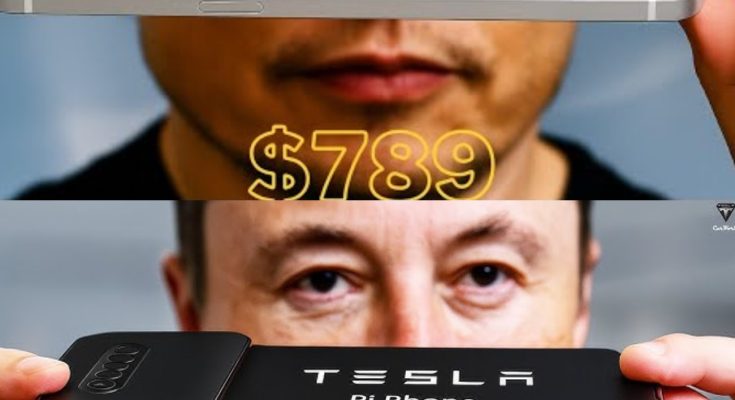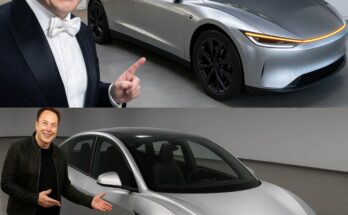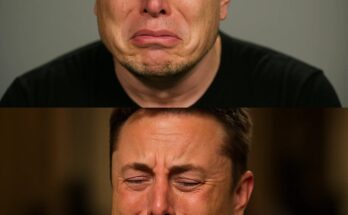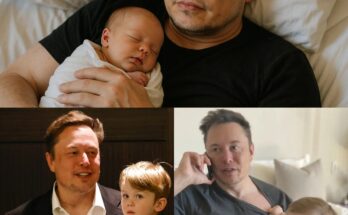Elon Musk Just Dropped a Bomb on the Tech World — The $789 Tesla Pi Phone With Free Starlink Internet for Life
The smartphone industry just experienced a shockwave. Elon Musk, never one to play small, has officially unveiled the Tesla Pi Phone — a $789 powerhouse that doesn’t just compete with Apple and Samsung, but threatens to rewrite the rules of mobile connectivity. The kicker? Every device comes with lifetime Starlink internet. No SIM. No Wi-Fi. No monthly bills. Wherever you are — desert, ocean, or mountain peak — you’re connected.
This isn’t a phone release. It’s a revolution.
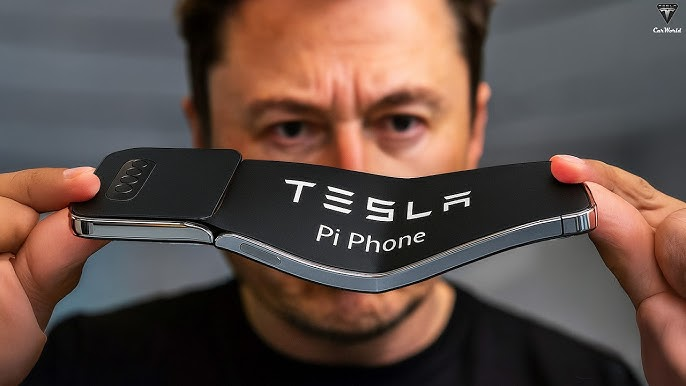
The Promise of Infinite Connectivity
At the heart of Musk’s latest announcement is a proposition that feels almost impossible: a phone that eliminates the middlemen. Forget cellular carriers and their data plans. Forget hunting for Wi-Fi in airports or remote towns. The Tesla Pi Phone taps directly into the growing Starlink satellite network, ensuring global coverage without barriers.
Industry insiders say this is the single most disruptive feature since Apple first introduced the iPhone in 2007. And for consumers, it’s not just about convenience — it’s about liberation from decades of contracts and hidden fees.
“Musk has basically declared war on telecom giants,” tech analyst Marissa Chen told CNBC. “If this works as promised, it could collapse entire business models overnight.”
Hardware Built Like a Spaceship
Beyond its connectivity, the Tesla Pi Phone brings specs that sound like something from a sci-fi script. Reports confirm a 6.9-inch ultra-bright OLED display, a 200MP primary camera, and up to 2TB of onboard storage. The device’s chassis is crafted from a titanium-aluminum composite — lightweight, durable, and designed to withstand extreme environments.
But the most striking feature might be the solar-charging back panel. Using Tesla’s proprietary photovoltaic technology, the Pi Phone can recharge itself in sunlight, reducing reliance on wall chargers and giving travelers or off-grid adventurers a level of freedom smartphones have never offered.
Neuralink Integration
Perhaps the most jaw-dropping element is Neuralink compatibility. Early demos show the Pi Phone syncing directly with Neuralink-enabled devices, allowing users to control features via brain signals. While mainstream adoption of Neuralink is still years away, Musk is positioning his phone as future-ready.
“Today, you control your phone with touch and voice,” Musk said during the announcement. “Tomorrow, you’ll control it with thought.”
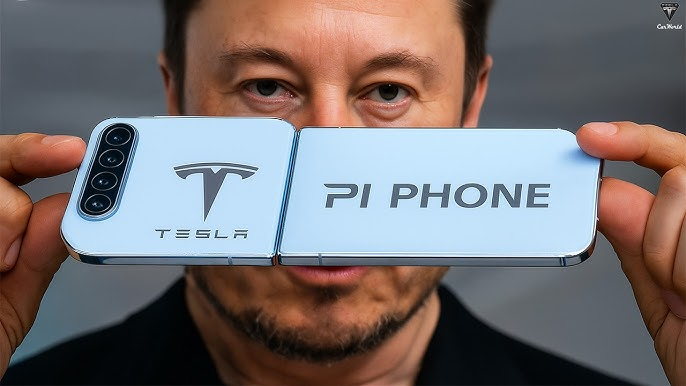
Crypto Mining on the Go
As if disrupting telecoms and integrating neuroscience weren’t enough, the Tesla Pi Phone is built with native cryptocurrency mining capability. Using Tesla’s optimized hardware, the phone can mine Musk’s pet crypto, MarsCoin, during idle hours. Early estimates suggest modest returns, but for millions of crypto enthusiasts, the symbolism is powerful: your phone isn’t just a tool — it’s an investment engine.
“Imagine a billion people mining together,” Musk mused. “That’s not a network. That’s a civilization.”
Tesla Ecosystem Integration
Of course, no Tesla product would be complete without synergy across Musk’s empire. The Pi Phone doubles as a Tesla car command center. Users can unlock their cars, adjust climate settings, monitor autopilot, or even summon their vehicle — all with a tap or a voice prompt. SpaceX integration is also rumored, with astronauts and remote operators already testing Starlink-enabled handsets in extreme conditions.
This seamless ecosystem puts Apple’s “continuity” features and Samsung’s SmartThings on notice. While Apple keeps its devices walled in, Musk’s strategy is different: build an empire where each product supercharges the others.
The iPhone’s Corner
The comparison to Apple was inevitable — and Musk embraced it head-on. “Apple innovated once,” he said at the event, smirking. “But now, they’re just polishing rectangles.”
With the iPhone 17 Pro Max retailing near $1,499 in many markets, the Pi Phone’s $789 price tag feels almost aggressive. Add in lifetime internet, solar charging, and features no competitor has dared touch, and suddenly Apple doesn’t just look behind. It looks trapped.
Market Fallout
Within hours of Musk’s announcement, Apple stock dipped 4% in after-hours trading. Telecom giants saw even sharper declines. Analysts scrambled to assess what a world without data plans could mean for their future.
“This isn’t just a phone,” said Wedbush Securities analyst Dan Ives. “This is a wrecking ball aimed at trillion-dollar industries.”
Meanwhile, social media erupted. Hashtags like #PiPhone, #StarlinkForever, and #GoodbyeiPhone trended globally within minutes. Tech YouTubers rushed to livestream reactions, calling it everything from “the iPhone killer” to “the smartphone for the next century.”
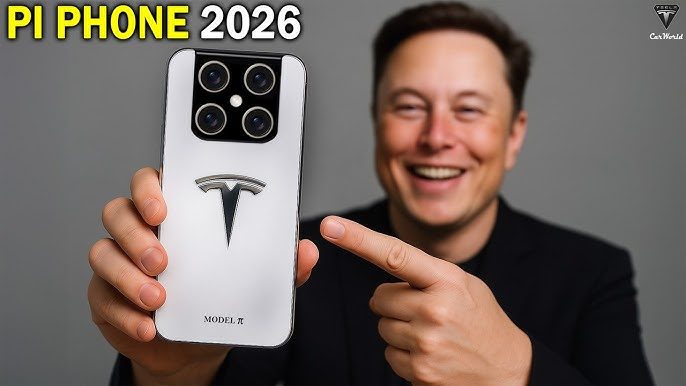
Skepticism Remains
Still, not everyone is sold. Skeptics point to Starlink’s ongoing challenges with scaling bandwidth. Others question whether global regulators will allow a phone that bypasses national telecom infrastructure. And while solar charging sounds revolutionary, real-world performance in cloudy or indoor environments remains unproven.
“The vision is intoxicating,” said telecom consultant Priya Natarajan. “But the devil is always in the details. Can Starlink handle five hundred million users? Can regulators stomach the loss of control?”
A Future Written in Disruption
Whether it succeeds or stumbles, one thing is clear: the Tesla Pi Phone has forced a conversation no one in Silicon Valley wanted to have. Apple, Samsung, AT&T, Verizon, and countless others now face a future where their models may be obsolete.
For Elon Musk, this is just another Tuesday. As he closed the launch event, he didn’t mince words: “We don’t make products for today. We make products for tomorrow. The Tesla Pi Phone is tomorrow in your hand.”
The audience erupted in applause. Investors called it the “most Musk thing ever.” And across the world, consumers refreshed Tesla’s website, waiting for preorder links to go live.
For the first time in years, the smartphone doesn’t just feel like another incremental upgrade. It feels like a leap.
And if Musk delivers even half of what he’s promised, the age of contracts, dead zones, and dying batteries may finally be over.
